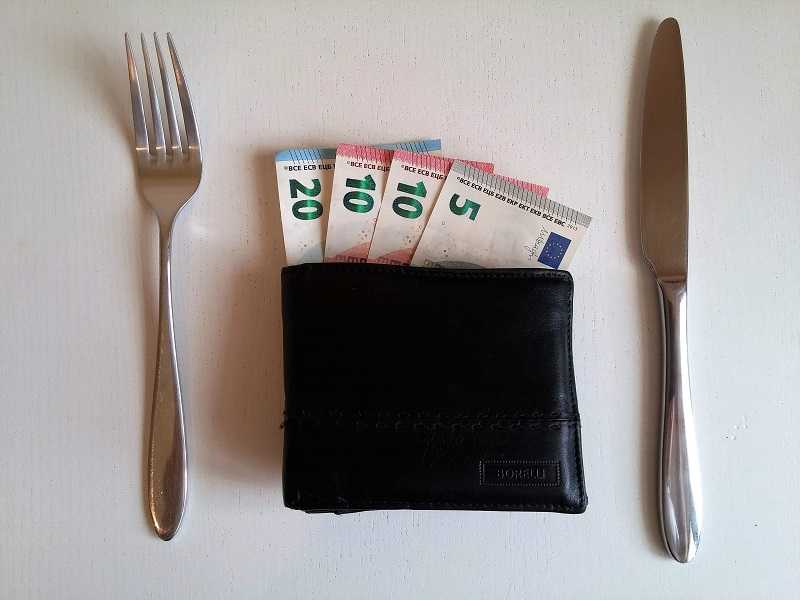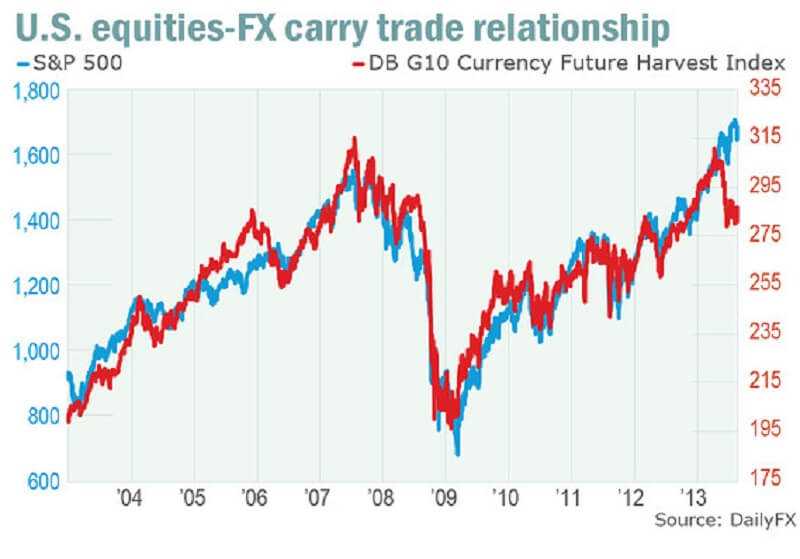3 min read

A currency carry trade is a popular technique among currency traders.
It is when a trader borrows a currency at a low-interest rate to fund the purchase of another currency earning a higher interest rate.
In the forex market, currencies are traded in pairs, as you already know. For example, when you buy USD/GBP you are actually buying the U.S. dollar and selling Great Britain pound at the same time.
You pay interest on the currency you sell and collect interest on the currency you buy.
In the forex market, interest payments occur every trading day based on your position.
Actually, all positions are closed at the end of the day in the forex market. But you don’t see it happen if you hold a position to the next day.
Brokers just close and reopen your position. Then they credit or debit you the overnight interest rate differential between the currencies.
This is the cost of “carrying” a position to the next day.
The amount of leverage makes the carry trade very popular.
Most forex trading is margin based. That means you have to place a small amount of the position and your broker will place the rest. Majority of brokers requires as little as 1% or 2% of a position.
The currency carry trade is borrowing in the currency of a country with a low-interest rate and using the funds to invest in the currency of another country with a higher interest rate.
And, of course, profiting from the difference.
For example, the popular carry trade is borrowing funds in Japanese yen and investing it in U.S. dollars.
How does currency carry trade work
Currency markets offer investors access to an asset class that is highly liquid and has the potential for gaining risk-adjusted returns. It, also, can show some similarity to traditional investments in a diversified portfolio.
The main goal in currency markets is to capture the gain of interest rate differentials between currencies, known as ‘the carry’.
The short-term interest rates can vary significantly across countries because of their different policy objectives. The macroeconomic imbalances have the influence too.

Countries with higher growth rates tend to have higher interest rates and stronger currencies.
A so-called ‘positive carry’ trade is one in which an investor borrows money in countries where interest rates are low and invests in a country where interest rates are higher.
This means that the investor sells (goes short) a position in low-interest rate currencies and buys (goes long) a higher interest rate currency.
The difference in interest rates between the two countries, ‘the carry’, will, over a period of time, be offset by the change in the exchange rate between the two countries.
However, exchange rates move in the expected direction, but not enough to offset the carry. This means that a positive return can be expected.
The inefficiency of the markets offers investors the opportunity to gain from exchange rate movements in addition to benefiting from the carry.
The profit or loss from a positive carry trade can be calculated:
Profit from ‘the carry’ (interest rate differential) + Profit/loss from exchange rate movements
In simple words, the traders pay a low-interest rate on the borrowed/sold currency, they simultaneously collect higher interest rates on the currency that they bought.
The interest rate differential between the two currencies is profit.
Currency carry trade gives traders a choice to “buy low and sell high”. Most forex “carry” trades involve currency pairs such as the NZD/JPY and AUD/JPY because of the high-interest rate spreads.
Pros and cons of currency carry trade
In addition to trading gains, currency carry trade gives you also interest earnings. Carry trading also lets you make use of leverage to trade assets you would not differently be able to yield.
The daily interest paid on the currency carry trade is based on the leveraged amount. That can make for enormous profits from an inexpensive outlay.

Still, currency carry trading brings significant risk. This comes due to the uncertainty in exchange rates.
If a trader fails to hedge their position appropriately, high levels of leverage employed in carry trades could result in large losses. This means that even small movements in exchange rates may cause losses.
So, we can say, currency carry trading is a good option for traders with a high-risk desire.
The currency carry trade, is potentially profitable, but gives a decent amount of risk.
Why is this? This is because the best currencies for this kind of trading are some of the most volatile.
Every single market sentiment among traders in the currency market can have a hard impact on “carry pair” currencies. Without sufficient risk management, a trader’s account can be wiped out by a cruel twist.
The best time to enter carry trades is when fundamentals and market sentiment support them. At times of positive market sentiment when investors are in a buying mood.
The bottom line
Currency carry trade has the potential to be very profitable over the long term if precisely managed. It can be a constant stream of income. Also, it can mitigate you from the negative effects of exchange rate movements.
In a currency carry trade, an investor potentially stands to profit or lose both from the relative movement of the exchange rate and the interest rate differential between the two currencies. Markets that present a high-interest rate differential often present higher currency volatility and an unexpected weakening of the target currency purchased could generate losses. To be profitable, the interest rate differential of a carry trade must be greater than the possible weakening of the target currency over the period of time that the trade is executed.



Leave a Reply